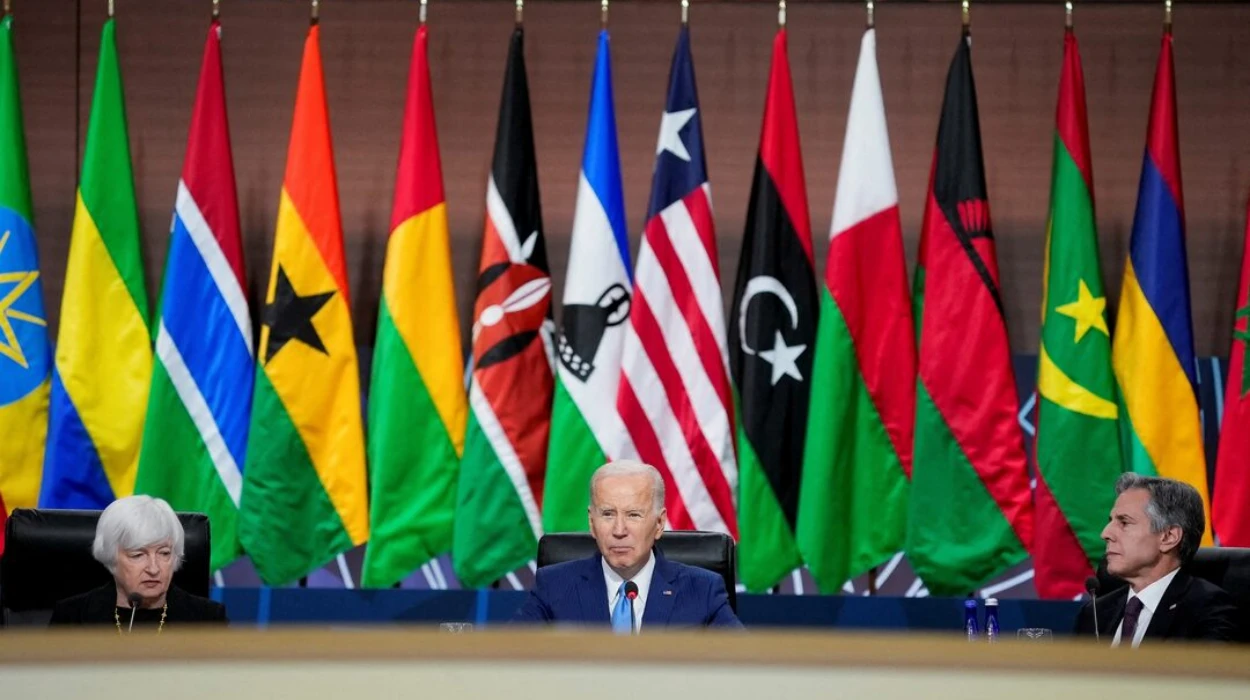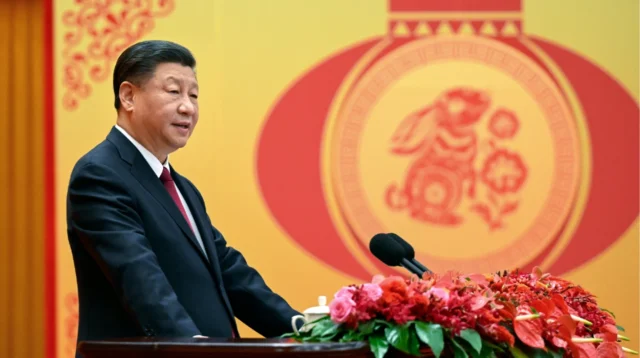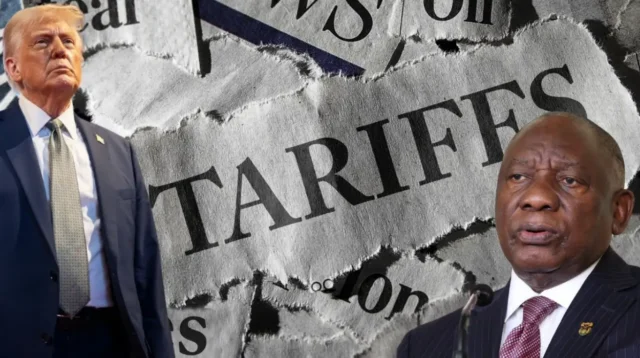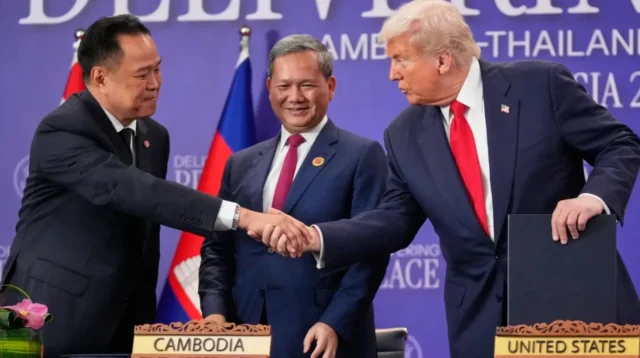At the 17 th U.S.Africa Business Summit: Luanda, Angola June 22 to 25, 2025, a new record was established during the summit with more than 2.5 billion dollars worth of trade agreements being signed. This meeting of leaders and corporate representatives transformed the nature of U.S. engagement with Africa as it was seen as the move towards a more strategic economic relationship rather than aid-based one.
The attendance was more than 2,700 with 12 African heads of states. Such a top-level representation demonstrated the significance given by both parties about the need to create sustainable, mutually beneficial relationships based on commerce and investment.
A Summit That Signaled Transformation
This year’s summit exceeded expectations. Attendance, deal volume, and the diversity of sectors involved marked a milestone in bilateral relations. The presence of key African leaders alongside U.S. negotiators indicated serious intent. What emerged was a vision beyond traditional development models—and toward a future of shared prosperity.
The focus on self-powered growth reflected a mutual desire to transition from transactional aid to transformative, long-term engagement. African nations sought investment with respect for their priorities, while U.S. entities aimed to secure reliable routes for trade and expansion.
Rethinking U.S. Policy on Africa
From Donor to Peer Partner
Washington’s approach to Africa has moved decisively away from paternalistic aid. The summit was described by the U.S. State Department as a “record mobilization of African and U.S. stakeholders,” supporting the new Commercial Diplomacy Strategy for Africa.
Tammy Bruce, spokesperson for the State Department, said,
“We’re here to move from traditional aid toward trade-led development. This record turnout demonstrates mutual commitment to strengthening investment and commercial ties.”
This semantic shift from donor to peer signals the maturation of U.S. policy. By leveraging private sector dynamism and transparency, the U.S. intends to offer an alternative to infrastructure-heavy loans from other global powers.
Major Deals Announced and Their Impact
Energy, Food Security, and Digital Infrastructure
A highlight was Hydro-Link’s $1.5 billion deal with Angola to build a 1,150-km private energy transmission corridor linking hydropower stations with key mining sites in the Democratic Republic of Congo. Delivering 1.2 GW of power, it promises transformational impact for regional industry.
Amer-Con Corporation and Angolan authorities collaborated to construct 22 grain storage terminals along the Lobito Corridor, marking another significant achievement. This investment tackles one of Angola’s critical development challenges: food storage and logistics.
Digital infrastructure drew significant attention too. U.S. cybersecurity firm Cybastion committed $170 million to Angola Telecom under its “Digital Fast Track” initiative, focusing on training, connectivity, and securing the national digital backbone.
In Sierra Leone, CEC Africa Sierra Leone Ltd. launched plans for the 108 MW Nant Power Project—West Africa’s first U.S.-backed LNG power plant—bringing affordable and reliable electricity to industrial and residential users.
Regional Integration and Tourism
Cross-border energy collaboration took center stage. A $760 million hydropower project benefiting Rwanda and the Democratic Republic of the Congo was agreed to by Ruzizi III Holding and Anzana Electric Group, a U.S.-based company. This is among the largest regional energy investments in Africa for 2025.
Simultaneously, Ethiopia announced partnerships with U.S. International Finance Partners to deliver $200 million in luxury hotels and branded residences, part of a pivot toward tourism-based development. Ethiopian President Taye Atske Selassie said the effort was “aligned with our national development priorities.”
Institutional Support and U.S. Delegation
The quality of the U.S. delegation affirmed the summit’s strategic intent. Ambassador Troy Fitrell, Senior Bureau Official for African Affairs, led high-level participation. Agencies such as the Export‑Import Bank, the International Development Finance Corporation (DFC), and the U.S. Trade and Development Agency were all present.
Connor Coleman of the DFC noted that many deals included infrastructure and development benchmarks.
“This summit is not just symbolic—it’s a strategic plan of action,”
he said, stressing implementation over announcement.
Global Positioning and Competition
Countering China’s Influence
With China’s Belt and Road impact still strong across Africa, the U.S. approach hinges on transparency and market-driven frameworks. Tamara Maxwell of the Export‑Import Bank described the U.S.’s strategy as “offering African nations a fair and transparent alternative.”
China continues to finance large-scale infrastructure via state-backed loans. The U.S., in contrast, is aiming at diverse portfolios, including energy, technology, and agribusiness, to foster long-term resilience in partner economies.
Mutual Benefit and Strategic Alignment
Expanding Markets and Creating Jobs
For American firms, Africa represents a consumer base projected to exceed 1.4 billion people by 2030. Investments in logistics, energy, and technology unlock new market access and growth opportunities. African nations, in turn, stand to gain employment, capacity building, and infrastructure gains essential to their economies.
Ethiopia’s President summed it up:
“We are welcoming partners, not patrons. This summit is proof that Africans are ready to co‑design their economic future.”
Why 2025 Is a Tipping Point
Several global shifts made the summit timely. Rising inflation, the aftermath of COVID‑19, and instability in Europe and the Middle East have disrupted commodity markets. African leaders have used this moment to diversify sources of investment and reduce dependency on aid.
The presence of 12 presidents at the summit confirmed that Africa now prefers deals that foster independence and address tangible goals: energy access, food security, and digital readiness.
Structural Change, Not Short-Term Wins
Investments from the summit are intended as catalysts for long-term change. They are conditioned on performance targets, local employment plans, and sustainable practices aligned with the UN’s Sustainable Development Goals (SDGs).
Ambassador Fitrell called it “a platform for durable, inclusive, and scalable growth.” He pledged continued oversight to ensure agreed benchmarks are met.
The Road Ahead
Negotiating deals was only the start. Delivering them will test governance, supply chains, and regulatory systems across various nations.
Connor Coleman explained,
“This is where our agencies come in. We’ll track these investments, support local partners, and troubleshoot challenges as they arise.”
A wave of implementation is expected in late 2025, with constructing sites, institutions, and regulatory frameworks that can sustain the summit’s momentum.
Reshaping Global Development Narratives
This summit challenges a long-standing development paradigm. With a focus on commerce, infrastructure, and digitalization, it portrayed an evolved form of diplomacy—one rooted in economic agency and mutual value.
African leaders asserted their authority in shaping this direction. No longer passive recipients, they helped forge the investment agenda, ensuring alignment with national priorities.
With $2.5 billion in deals supporting critical sectors, the 2025 U.S.–Africa Business Summit offers a blueprint for equitable, sustainable global partnerships across continents.





